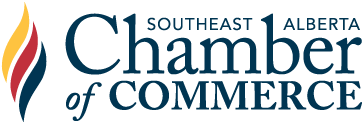Domestic Reclaimed Water Use (Co-sponsored)

Domestic Reclaimed Water Use (Co-sponsored)
Energy & Environment - Provincial Policy
Sponsor: Sherwood Park
Co-Sponsor: Medicine Hat
Issue
Health Canada has guidelines for domestic reclaimed water use in toilet and urinal flushing but Alberta does not follow these guidelines as our province does not use reclaimed (grey) water.
Background
In May 2001, British Columbia published a code of practice for the use of reclaimed water (BCMELP, 2001)1, which serves as a key reference and guidance document for the use of reclaimed water in British Columbia and is designed to support the regulatory requirements prescribed in the municipal sewage regulation. In 2002, it was stated that roughly three per cent of wastewater in B.C. is reused (Maralek et al, 2002) and reuse is a key component in British Columbia’s water conservation strategy. Currently, these guidelines do not apply to Alberta as Alberta does not differentiate between black water and grey water. All sanitary effluent is considered black water only.
Statistics Canada indicates that grey water is a huge source of potentially reusable water. Treated grey water can be reused for toilet flushing, irrigation and industrial use. Currently there is no regulation for households to recycle their grey water.
Canadian statistics state that 35 per cent of the average household’s water is considered grey water (showers and bath water). Thirty per cent of the average household water usage is for toilet flushing. Therefore, if the use of grey water was regulated, it could be reused for toilet flushing which saves fresh water for other uses.
A study (June 25, 2012) has found that citizens in a water – stressed basin of Spain are willing to pay over $5 extra on top of their monthly water bill to treat wastewater that can be used to replenish river flows. Over- extraction of river water for use in agriculture and by cities reduces water flow in rivers and may lead to environmental stress. Reclaimed water can be released into rivers to boost water flows.
Currently in Spain, reclaimed water accounts for 12.8 per cent of irrigated water used in the area of city dwellers. It is estimated that increasing the river flow would generate a benefit of $32.56 million a year.2
Recommendations
- Adopt guideline values as per Canadian Guidelines for Domestic Reclaimed Water for Use in Toilet and Urinal Flushing by Health Canada as a starting point with opportunity to move forward for additional recycle of water options in the future; and
- Allow the use of domestic reclaimed water and storm water in toilet flushing, irrigation and industry in Alberta.
Resources
- http://www.env.gov.bc.ca/epd/epdpa/mpp/pdfs/cop_reclaimedwater.pdf
- http:// www. globe-net.com/articles/2012/june/25/recycled-wastewater-could-boost-river-flows
Date Approved: May 2013
Date Renewed: May 2019, May 2022
